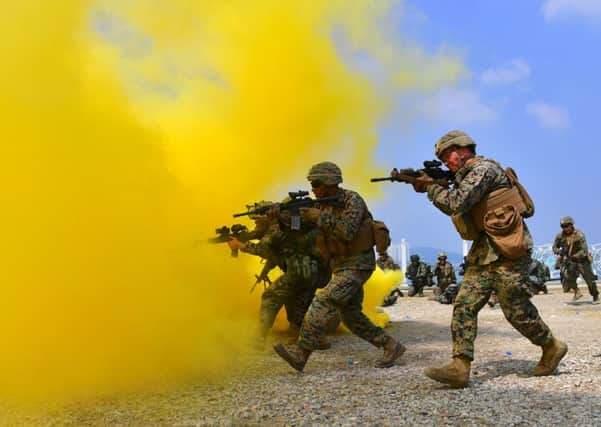North Korea condemned after conducting fifth nuclear test


South Korea’s president called the detonation, which Seoul estimated was the North’s biggest-ever in explosive yield, an act of “fanatic recklessness.” Japan called North Korea an “outlaw nation.”
North Korea’s boast of a technologically game-changing nuclear test defied both tough international sanctions and long-standing diplomatic pressure to curb its nuclear ambitions. It will raise serious worries in many world capitals that North Korea has moved another step closer to its goal of a nuclear-armed missile that could one day strike the US mainland.
Advertisement
Hide AdAdvertisement
Hide AdSeoul vowed to boost psychological warfare efforts by increasing the number of propaganda loudspeakers along the rivals’ border, the world’s most heavily armed, and the number of hours of anti-North Korean broadcasts.
Hours after South Korea noted unusual seismic activity near North Korea’s northeastern nuclear test site, the North said, in its state-run media, that a test had “finally examined and confirmed the structure and specific features of movement of a nuclear warhead that has been standardised to be able to be mounted on strategic ballistic rockets.”
“The standardisation of the nuclear warhead will enable North Korea to produce at will and as many as it wants a variety of smaller, lighter and diversified nuclear warheads of higher strike power,” North Korea said.
“This has definitely put on a higher level the North’s technology of mounting nuclear warheads on ballistic rockets.”
North Korea, led by a third-generation dictatorship and wary of outsiders, protects its nuclear programme as a closely guarded state secret, and the claims about advancements made in its testing could not be independently verified.
South Korea’s main spy agency told lawmakers in a closed-door briefing after the test that it does not think North Korea currently has the ability to develop nuclear weapons that can be mounted on ballistic missiles, but intelligence officials expressed worries that the North’s efforts to do so are progressing more quickly than previously thought.
South Korean president Park Geun-hye strongly condemned the test, saying in a statement that it showed the “fanatic recklessness of the Kim Jong Un government as it clings to nuclear development.” Kim is the North Korean leader.
Park’s office said she spoke with US president Barack Obama about the test by phone from Laos, where she attended a regional summit. Park said South Korea will employ all available measures to put more pressure on North Korea, which had previously conducted nuclear tests every three to four years.
Advertisement
Hide AdAdvertisement
Hide AdJapanese chief cabinet secretary Yoshihide Suga called North Korea an “outlaw nation in the neighbourhood” and said Japan will consider stepping up its sanctions against the North.
South Korea’s weather agency said the explosive yield of the North Korean blast would have been 10 to 12 kilotons, or 70 to 80 per cent of the force of the atomic bomb the United States dropped on the Japanese city of Hiroshima in 1945. The North’s fourth test was an estimated six kilotons.
North Korea said no radioactive material leaked, but the explosion put the region on edge. Chinese state media said the environmental protection agency started nuclear radiation monitoring.